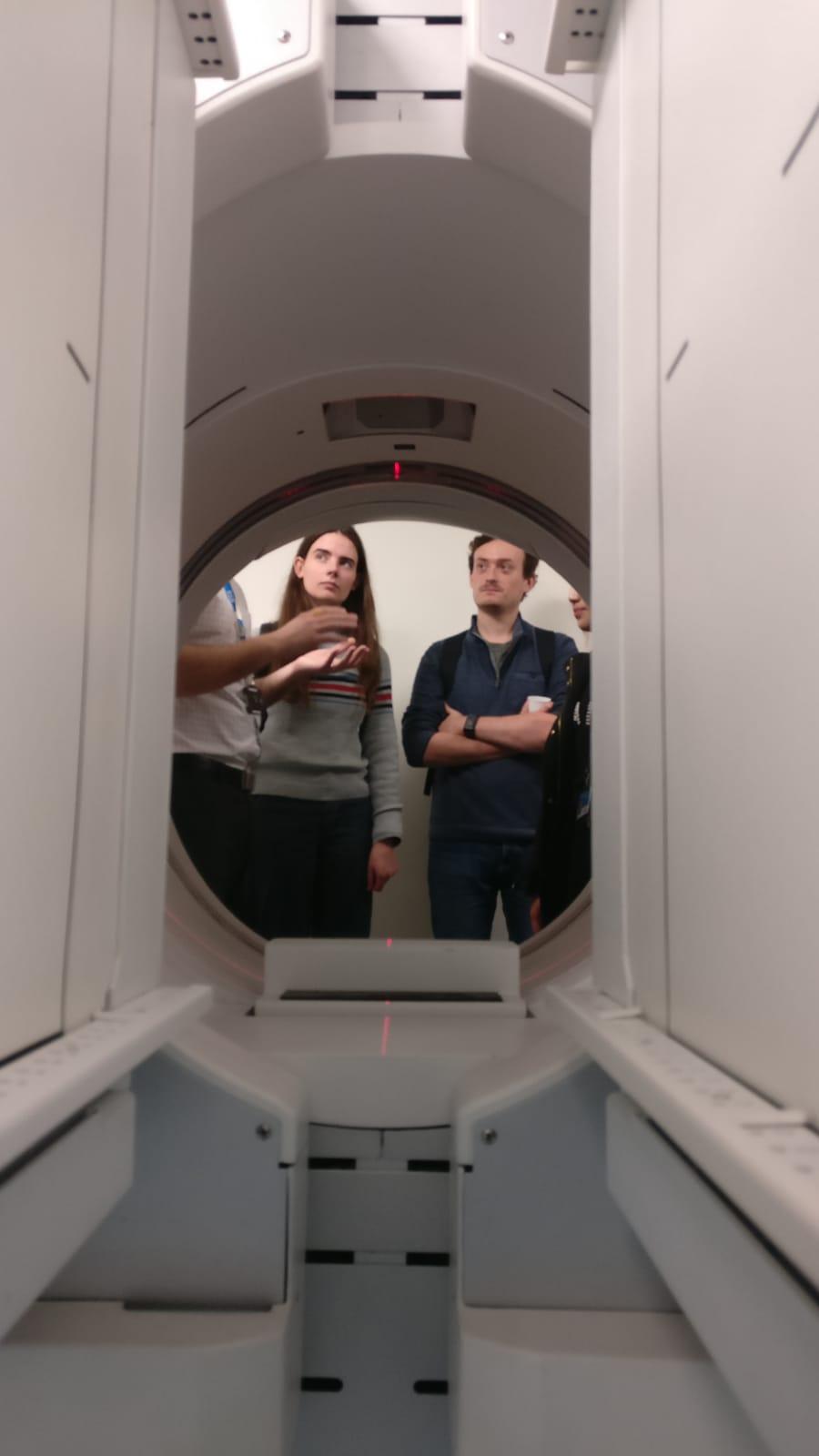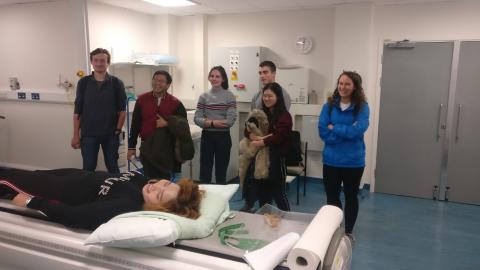
Submitted by Jo Boyle on Wed, 12/12/2018 - 08:56
On November 29th, students in the MPhil for Nuclear Energy were able to have a guided tour of the Addenbrooke’s Hospital Nuclear Medicine Department. The Nuclear Energy students were accompanied by faculty, PhD students, and students from the MPhil in Energy Technologies. While in the nuclear medicine department, the students were given the opportunity to learn about and observe firsthand the radioisotopes and equipment used for both medical diagnostic procedures and nuclear medicine therapy. Students were able to learn about the different imagining systems and techniques used at the hospital- including new diagnostic procedures which combine PET with computed X-ray tomography (CT) scans to give co-registration of the two images (PET-CT), enabling 30% better diagnosis than with a traditional gamma camera alone. This technique allows for information to be collected on a number of diseases- from dementia to cancer.
Addenbrooke’s hospital is also home to a nuclear medicine pharmacy/manufacturing lab where technetium (99mTc) - the most frequently used radioisotope for diagnostics is produced. The students were able to see where the technetium is produced and learn about the process from a nuclear medicine physicist who works in the department. In addition to technetium, the students were able to discuss other radionuclides used in the hospital, including radium, potassium-40, cobalt-60, iridum-192, and iodine-131, among others. After seeing both the imaging systems and isotopes used for diagnosis as well as treatment, the students were able to see how the hospital uses the isotopes and radiography systems to create 2D and 3D topographical scans. This allowed the students to see the direct impact of radioisotopes in the medical field. Being able to see scans that indicated a patient had signs of thyroid cancer, Parkinson’s disease, and even weak bones brought what they’ve learned in the classroom to how the science is actually applied to impact people’s lives. Radionuclides at Addenbrooke’s are also used for cardiovascular diagnostics, which the students were able to see from seeing video of a heart beating made visible by using radioisotopes and imaging systems which showed that the left ventricle was not moving as much fluid as the right. Overall, the students were able to see the applicability of nuclear physics in the medical field from a nuclear physicist who works with these key radionuclides every day. It was evident that the field of nuclear medicine continues to grow, as more research into both imagining techniques and radioisotopes was discussed. This visit provided a unique opportunity to see the full scope of nuclear medicine- from the production of technetium and use of other radionuclides produced offsite, to the various imaging systems used, to the final results of the 2D and 3D scans used for diagnosis.

